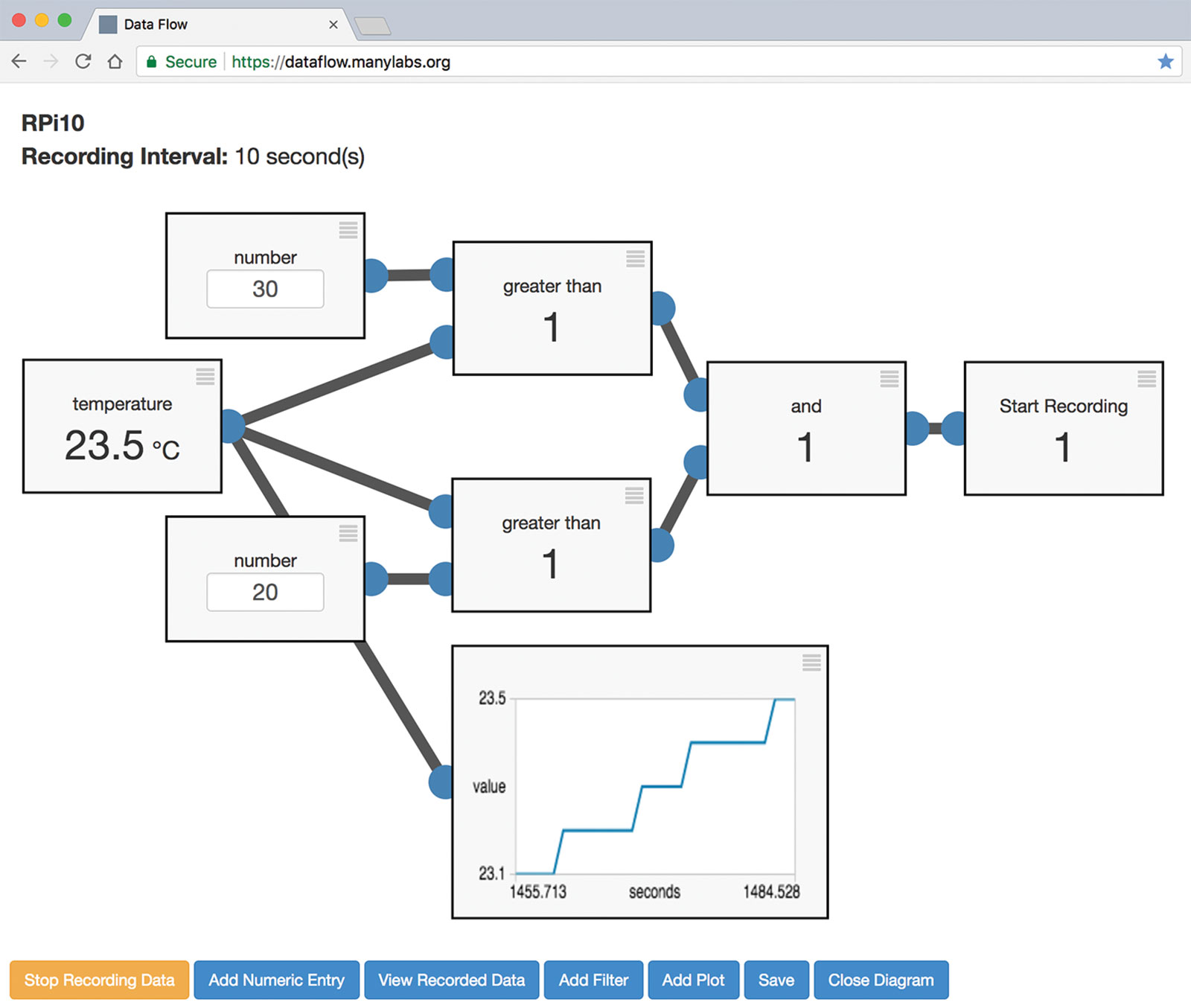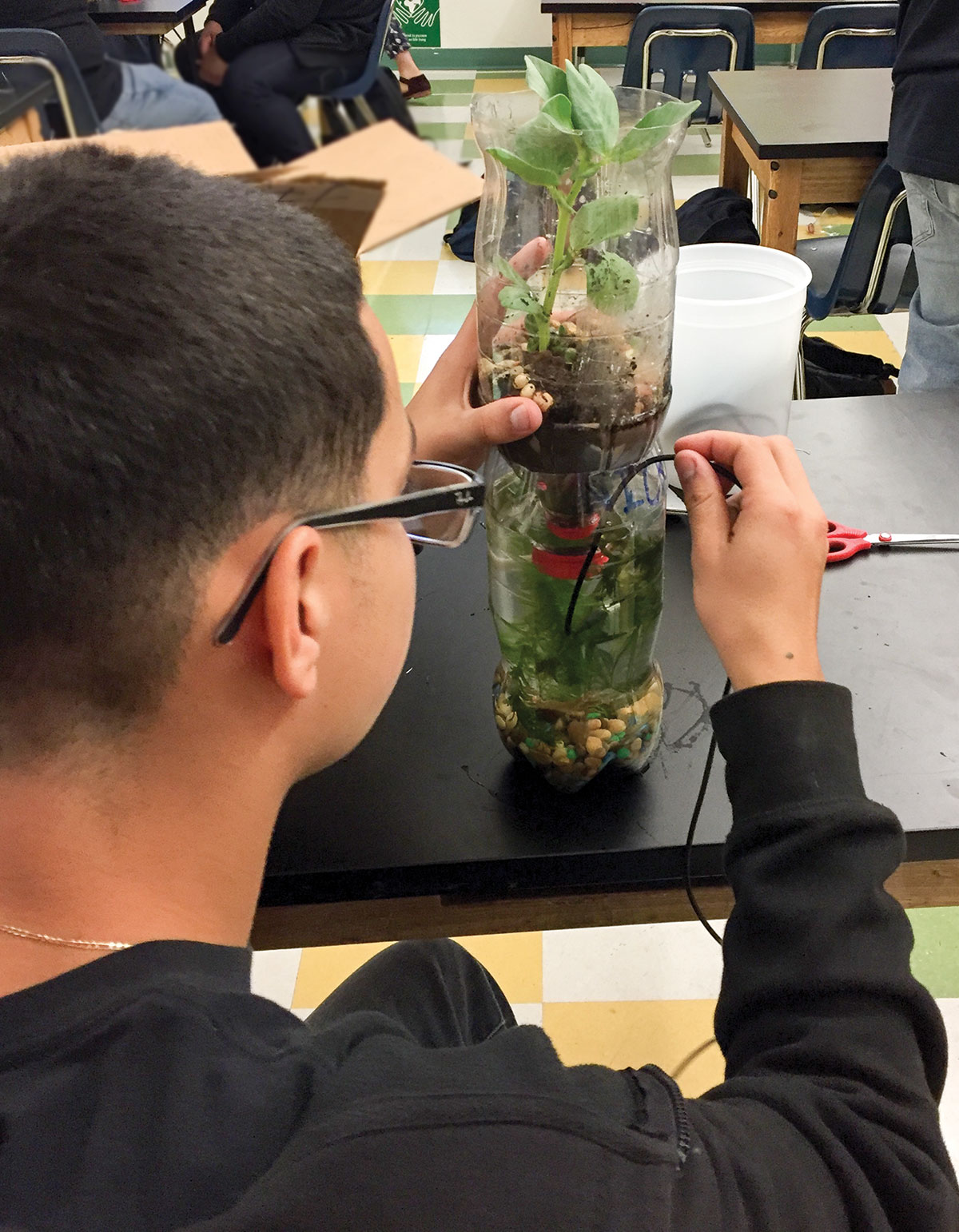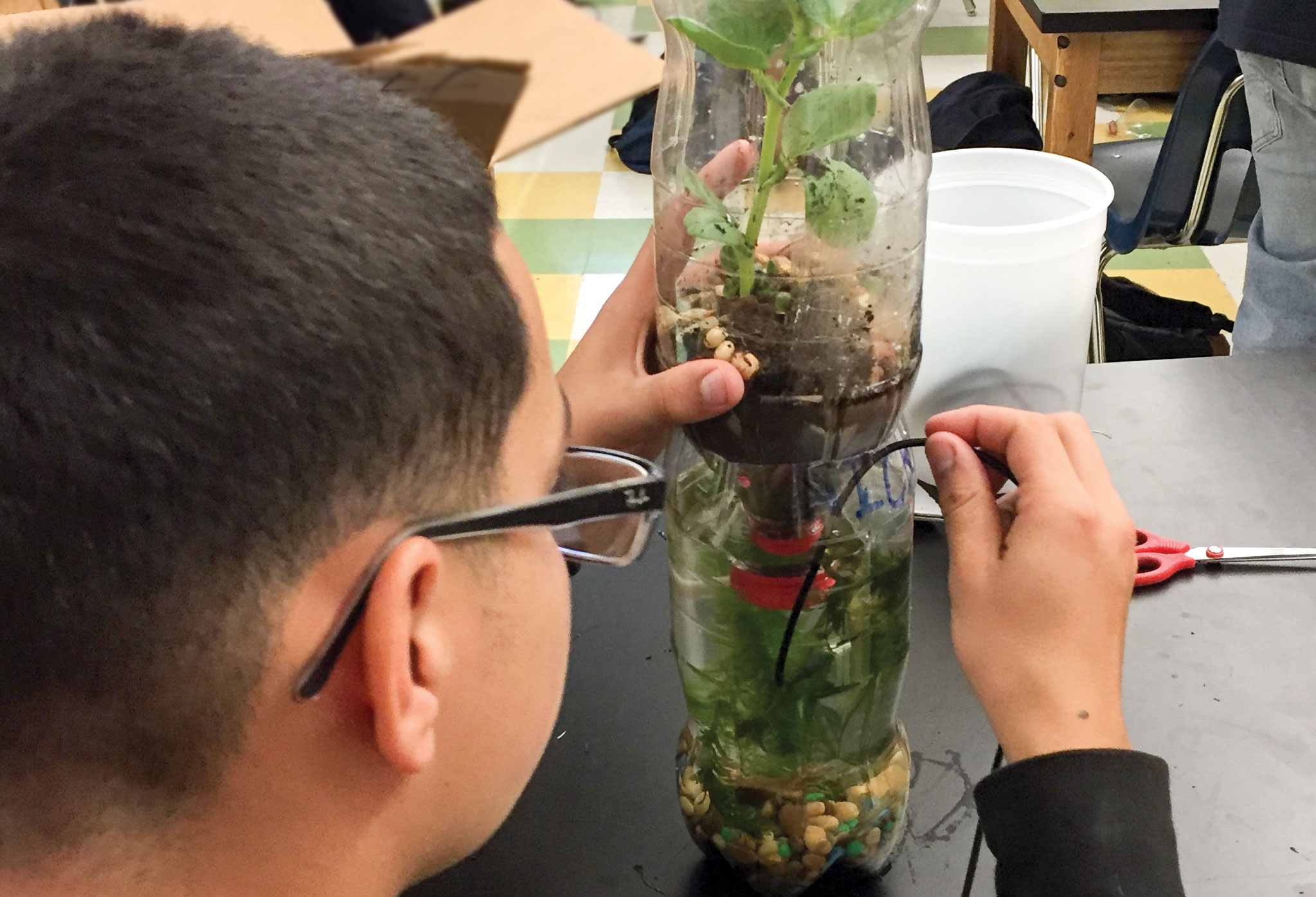Science Thinking for Tomorrow Today
Tucked away all over the world are seed banks, places that store seeds to preserve and protect them: Colorado, Norway, Syria, even Framingham, Massachusetts, where a standard chest freezer stores a million rare seeds. These so-called “seed arks” are saving their contents for use in an uncertain future in which everything from war to climate change may determine whether a seed can germinate. How can we best prepare today’s students to engage the complex, precarious scientific and engineering problems of tomorrow, when even germinating a seed may test the limits of knowledge?
We live in an era in which connectivity reigns supreme, and the “Internet of Things,” from self-driving cars to “smart homes,” has become part of our increasingly technological world. Solving big problems like growing sufficient food and developing complex medical treatments requires more than memorizing facts. Knowing how to leverage technology and program computers, formulate and solve problems, generate and interpret various kinds of data, as well as carry out hands-on experiments have become part of an essential skill set. Yet these skills—necessary for solving today’s dynamic, multidisciplinary problems—are rarely taught in a collaborative and integrated way in current K-12 classrooms.
We’re investigating ways to teach students how to learn science by doing science, like real scientists—by undertaking authentically complex experiments that rely heavily on digital technology, and often have unexpected outcomes.
Doing familiar biology experiments a new way
InSPECT (Integrated Science Practices Enhanced by Computational Thinking), a project in its second year of development and supported by the National Science Foundation, is researching a new model for science learning that aligns with NGSS science and engineering practices. Using inexpensive DIY lab instruments, InSPECT is developing a series of sequenced, open-ended, technology-enhanced high school biology experiments that facilitate inquiry and integrate computational thinking into core science content and practices.
More than a half dozen biology units are under development. Activities include a focus on cellular respiration and plant photosynthesis using traditional leaf, soil, and plant growth labs. An example is seed germination, a familiar biology topic that technology can enhance by supporting independent investigation and inquiry. Using electronics that measure and control temperature, light, and moisture, students use a growth chamber with sensor inputs to record data on changing conditions. Do seeds need specific temperature, moisture, and/or light conditions to trigger germination? How do plants successfully transition from germination to seedlings? Laboratory experiments, using these same basic components, are under way in academic institutions worldwide, assessing the effects of climate change on global food sources.
InSPECT is currently piloting a setup familiar to many teachers, an eco-column—a three-tiered mini-biome using clear two-liter soda bottles. The activity reaches a new level of sophistication by inserting electronic sensors into the eco-column’s terrestrial, aquatic, and composting chambers. The self-identifying sensors are plugged into a low-cost Raspberry Pi computer less than an inch high and the size of a credit card that sends a bounty of sensor data wirelessly to a server (Figure 1). By recording air and water temperatures, and light, humidity, oxygen, and CO2 levels, students can investigate the flow of energy and matter between the chambers.

We are preparing to add another innovation: actuators (a component that moves or controls a mechanism). The actuators are triggered by pioneering software called Dataflow, a simple visual interface that students can program to do things such as turn lights on if it’s too dark or turn on a water sprinkler pump if the soil is too dry (Figure 2). Dataflow was co-designed in collaboration with Manylabs, an open science lab in San Francisco for scientists, researchers, and “makers.” They also helped develop the eco-column sensors. InSPECT utilizes another Concord Consortium innovation to help students and teachers visualize and interpret their data: CODAP (Common Online Data Analysis Platform), a user-friendly, open-source software platform available free for any curriculum development project.
InSPECT teachers thoughtfully lead students through planning an experiment, making decisions about data collection rates, reasoning about data received from sensors, and examining real-time graphs to see how a dynamic biological system responds to different environmental factors. The plethora of data generated allows students to investigate how changing light levels affect rates of CO2 consumption in plants, or how the humidity level increases during plant transpiration—trends not observable otherwise. Pairing this Internet of Things (IoT) sensor capability with the Dataflow software enhances a standard observational biology activity.

Supporting teachers
Many teachers are struggling to respond to an unprecedented emphasis on teaching science practices. This sets up a tension between developing activities that shoehorn critical new material into an existing curriculum versus developing longer and more complex activities that add content but can’t be easily embedded into an existing curriculum.
InSPECT developers decided to try both. In schools where the syllabus is less flexible, we are developing activities that fit seamlessly. Schools with more scheduling latitude provide an opportunity to test more complex units. Ultimately, we want to push the boundaries of IoT technologies to support student inquiry and deepen concepts teachers are already targeting.
Lighthouse Community Charter School, in Oakland, California, is the first school to pilot our eco-column and seed germination activities (Figure 3). Through this pilot we have learned how much support teachers need as they integrate the science practices and IoT sensors. For this reason, the project supplied Lighthouse with technology kits that included plug-in sensors and actuators, sophisticated microcontrollers, computer boards, and software. The school also received technical assistance, online resources, classroom assistance, and support integrating InSPECT units into their curriculum. Lighthouse is a K-12 school serving a predominantly low-income community of 750 students.
Long-term implications

Currently the project is collecting and analyzing pilot data to understand how students use sensor data in their biology investigations, and how these ongoing scientific practices can offer opportunities for students to engage in computational thinking. The impact of our research may reach to other biology topics, grade levels, and science disciplines. By providing realistic hands-on examples of the central role of computing in STEM disciplines, InSPECT is engaging students in integrated scientific and computational practices. It is teaching students not simply about data acquisition, but how to act on data: make a motor move, or a fan turn, or open a door to a plant chamber. InSPECT is challenging students to think intentionally about how they produce and work with data—and analyze not only why things happen, but how they can make something happen.
Data is everywhere. It can be pulled off the web or collected by a sensor that sends it over a network to a distant computer where it displays on a scientist’s screen as a graph or triggers an action. Data flows between things in control and feedback systems in biology, but also in robotics and heating systems, and even the toaster in your own home.
Sherry Hsi (shsi@concord.org) is a senior research scientist.
Lisa Hardy (lhardy@concord.org) is a research associate.
Tom Farmer (tfarmer@concord.org) is a curriculum developer.
This material is based upon work supported by the National Science Foundation under grant DRL-1640054. Any opinions, findings, and conclusions or recommendations expressed in this material are those of the author(s) and do not necessarily reflect the views of the National Science Foundation.

